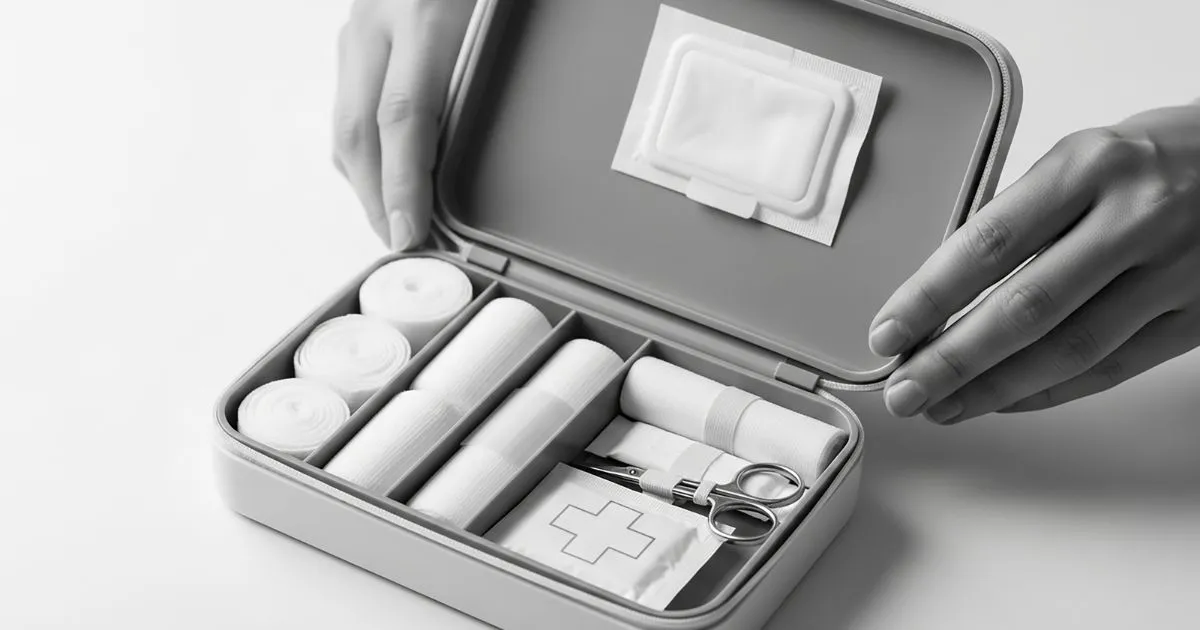Poor circulation slows wound healing because it limits the delivery of oxygen, nutrients, and immune cells to the wound site while also reducing the removal of waste products and bacteria. Without adequate blood flow, your body cannot effectively repair damaged tissue or fight infection.
Contact us today to start your journey toward proper healing and recovery.
Understanding the Connection Between Circulation and Healing
When you sustain a wound, your body initiates a complex healing process that depends almost entirely on your circulatory system. Blood flow serves as the transportation highway for everything your body needs to repair itself. When circulation is compromised, this entire healing mechanism becomes significantly less efficient.
What Your Blood Delivers to Wounds
Your circulatory system performs several critical functions during wound healing:
Oxygen transport is perhaps the most vital role. Cells involved in wound repair require substantial amounts of oxygen to function properly. Fibroblasts, which produce collagen for new tissue formation, need oxygen to synthesize this essential structural protein. Without adequate oxygen, collagen production drops dramatically, leaving wounds weak and slow to close.
Nutrient delivery ensures healing cells have the fuel they need. Proteins, vitamins (especially vitamin C and vitamin A), minerals like zinc, and glucose all travel through your bloodstream to the wound site. These nutrients power the cellular activities required for tissue regeneration.
Immune cell deployment depends on robust circulation. White blood cells, including neutrophils and macrophages, must reach the wound quickly to prevent infection and clear away dead tissue. Poor circulation means fewer infection-fighting cells arrive at the wound, increasing infection risk and delaying healing.
What Your Blood Removes from Wounds
Circulation isn’t just about delivery—it’s also about removal. Blood flow carries away metabolic waste products, dead cells, and bacteria from the wound area. When circulation is poor, these harmful substances accumulate, creating an environment that inhibits healing and promotes infection.
The Four Stages of Healing—All Affected by Circulation
Wound healing occurs in four overlapping phases, and poor circulation disrupts each one:
The hemostasis phase occurs immediately after injury. Blood vessels constrict and clotting factors arrive to stop bleeding. While poor circulation doesn’t typically prevent initial clotting, it can affect the quality of the clot formed.
The inflammatory phase begins within hours and lasts several days. This is when immune cells rush to the wound to prevent infection and begin cleanup. Reduced blood flow means fewer immune cells arrive, extending this phase and increasing infection risk.
The proliferative phase involves new tissue formation. Fibroblasts multiply and produce collagen, new blood vessels form through angiogenesis, and the wound begins to contract. This phase is extremely oxygen-dependent. Poor circulation starves cells of oxygen, dramatically slowing tissue formation.
The remodeling phase can last months to years as scar tissue strengthens and reorganizes. Even during this final phase, adequate blood flow remains important for delivering the resources needed to properly strengthen healing tissue.
Common Causes of Poor Circulation That Affect Healing
Several conditions compromise circulation and subsequently impair wound healing:
Diabetes damages blood vessels over time, particularly in the extremities. High blood sugar levels harm the delicate lining of blood vessels and impair the function of red blood cells, reducing oxygen delivery. This is why diabetic foot ulcers are notoriously difficult to heal.
Peripheral artery disease occurs when plaque builds up in arteries, narrowing them and restricting blood flow to the limbs. This condition significantly increases the risk of non-healing wounds, particularly on the legs and feet.
Venous insufficiency prevents blood from flowing properly back toward the heart, causing blood to pool in the legs. This creates pressure that damages tissue and impairs healing, leading to venous leg ulcers.
Smoking constricts blood vessels and reduces oxygen in the blood. Nicotine causes vasoconstriction, while carbon monoxide from smoke displaces oxygen in red blood cells. Smokers experience wound healing times that are substantially longer than non-smokers.
Obesity can compress blood vessels and contribute to circulatory problems, particularly in the lower extremities where excess weight creates additional pressure.
Warning Signs Your Wound May Have Circulation Issues
Certain symptoms suggest that poor circulation is affecting your wound healing:
- Wounds that show no improvement after two weeks
- Pale, cool, or bluish skin around the wound
- Reduced or absent pulse in the affected limb
- Increased pain when elevating the affected area
- Wound edges that appear dry or blackened
- Minimal bleeding when the wound first occurred
- Numbness or tingling in the affected area
How Healthcare Providers Address Circulation-Related Healing Problems
Medical professionals have several strategies for managing wounds complicated by poor circulation:
Improving underlying circulation is the primary goal. This might involve medications to improve blood flow, procedures to open blocked arteries, compression therapy for venous issues, or aggressive management of conditions like diabetes.
Specialized wound care techniques can help compensate for poor circulation. These include advanced dressings that maintain optimal moisture, negative pressure wound therapy, hyperbaric oxygen therapy, and growth factor treatments.
Infection prevention and management becomes even more critical when circulation is compromised, as these wounds are particularly vulnerable to infection.
Supporting Your Body’s Healing Despite Circulation Challenges
While medical intervention is essential for serious circulation problems, certain lifestyle measures can support healing:
Staying hydrated helps maintain blood volume and flow. Physical activity appropriate for your condition can improve circulation. Elevating wounds above heart level when possible can reduce swelling and improve blood flow. Eating a protein-rich diet with adequate vitamins and minerals provides building blocks for healing. Managing chronic conditions like diabetes and high blood pressure protects blood vessels from further damage.
When to Seek Professional Help
If you have a wound that isn’t healing as expected, especially if you have diabetes, peripheral artery disease, or other circulatory conditions, seeking specialized wound care is crucial. Our wound care services connect patients with healthcare professionals who specialize in wound management and can assess whether circulation issues are impeding their healing process.

Early intervention makes an enormous difference in outcomes. Wounds that don’t show signs of healing within two weeks warrant professional evaluation. Care specialists can coordinate comprehensive treatment plans that address both the wound itself and underlying circulation problems, giving your body the best possible chance to heal properly.
Remember, you don’t have to navigate complex wound healing challenges alone. Specialized care teams understand the intricate relationship between circulation and healing and can develop personalized strategies to support your recovery.
How Collective Care Can Help Your Wound Healing
If you’re struggling with a wound that won’t heal due to poor circulation, Collective Care can connect you with specialized healthcare professionals who understand the complex relationship between blood flow and wound recovery.
- Expert wound care coordination: Collective Care connects you with physicians and specialists who have extensive experience treating circulation-related wound healing complications
- Comprehensive assessment services: Care specialists help arrange evaluations to determine if poor circulation is affecting your wound and identify underlying conditions like diabetes or peripheral artery disease
- Treatment plan navigation: Our team helps you understand your treatment options and coordinates care between multiple providers, ensuring all aspects of your circulatory health and wound healing are addressed
- Advanced wound therapy access: We connect patients to providers who offer specialized treatments such as compression therapy, hyperbaric oxygen therapy, and advanced wound dressings designed for circulation-impaired wounds
- Chronic condition management support: Care specialists help coordinate ongoing management of conditions like diabetes and venous insufficiency that contribute to poor circulation and slow wound healing
- Timely intervention: Early detection and treatment of circulation problems dramatically improve wound healing outcomes, and Collective Care ensures you get connected to the right specialists quickly
- Patient education and support: Our care specialists provide guidance on lifestyle modifications and self-care strategies that support circulation and promote wound healing between medical appointments
Getting professional help early makes all the difference in wound healing outcomes, especially when circulation issues are involved. Collective Care’s specialists can develop personalized care plans that address both your wound and the underlying circulation problems causing delayed healing.
Take the Next Step Toward Better Wound Healing
Don’t let a non-healing wound compromise your health and quality of life. Collective Care’s specialists are ready to connect you with the right healthcare professionals who can address your circulation issues and create a personalized wound healing plan. Contact us today to start your journey toward proper healing and recovery.
